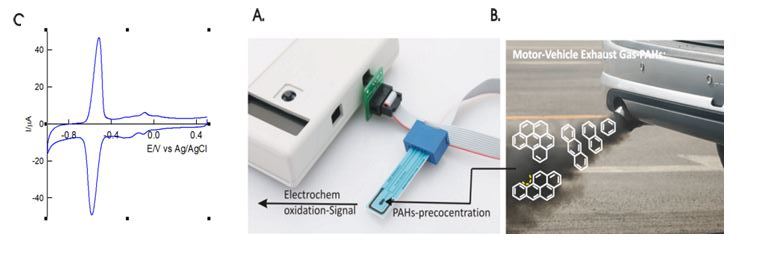PI Name & Affiliation:
Dr. Annamalai Senthil Kumar,
Higher Academic Grade
CO2 Research and Green Technologies Centre
Vellore Institute of Technology, India
Funding Agency: DST-SERB
Scheme: Core Research Grant (CRG)
Overlay: Rs. 35,37,600
Duration of the Project: 3 Years

Dr. Annamalai Senthil Kumar

Project Description
(i) IMPORTANT OF THIS WORK: Benzene and polyaromatic hydrocarbons (PAHs), referred as fused ring aromatics and majority of these compounds are responsible for major environmental pollution and human carcinogenicity (priority PAHs). Due to the non-amendable and rigid aromatic structures, it is extremely difficult to oxidize or decompose benzene and PAHs by conventional chemical procedures. Thus, the development of new and novel methods for the effective and facile decomposition of the inert and toxic aromatic organic compounds in room-temperature is extremely important for environmental and health concerns. (ii) CHALLENGES WITH CHEMICAL-OXIDATION OF PAHs: Several stringent and harsh chemical methods with involvment of complex protocols that follow slow chemical reaction kinetics, have been reported. (iii) CHALLENGES WITH ELECTROCHEMICAL OXIDATION OF PAHs: Due to the electro-inactive character, need for about 2 V vs Ag/AgCl oxidation potential and nonaqueous experimental conditions are highly need. Solid electrodes like Pt and boron-doped diamond (BDD) were used for this purpose in non-aqueous-/strong acidic-medium based working condition. Note that benzene has been used as an electrolyte in electrochemistry. (iv) PROPOSALS OF THIS PROJECT: (A) Development of a facile electrochemical platform for the oxidation of priority PAHs-environmental pollutants as surface-confined redox species (non-hazardous) using graphitic material chemically modified electrode (conventional and/or disposable screen-printed carbon electrodes) at room temperature and in aqueous solution (Green-technology route). (B) Mechanistic analysis by in-situ EQCM and several ex-situ physicochemical characterization studies, (C) The surface-confined redox species approach will be used for PAH-oxidative destruction of pollutant and sensing (a), as electrocatalyst for selective electroanalytical applications (b) and organic-electronics (high-performance pseudo-capacitor) (c).